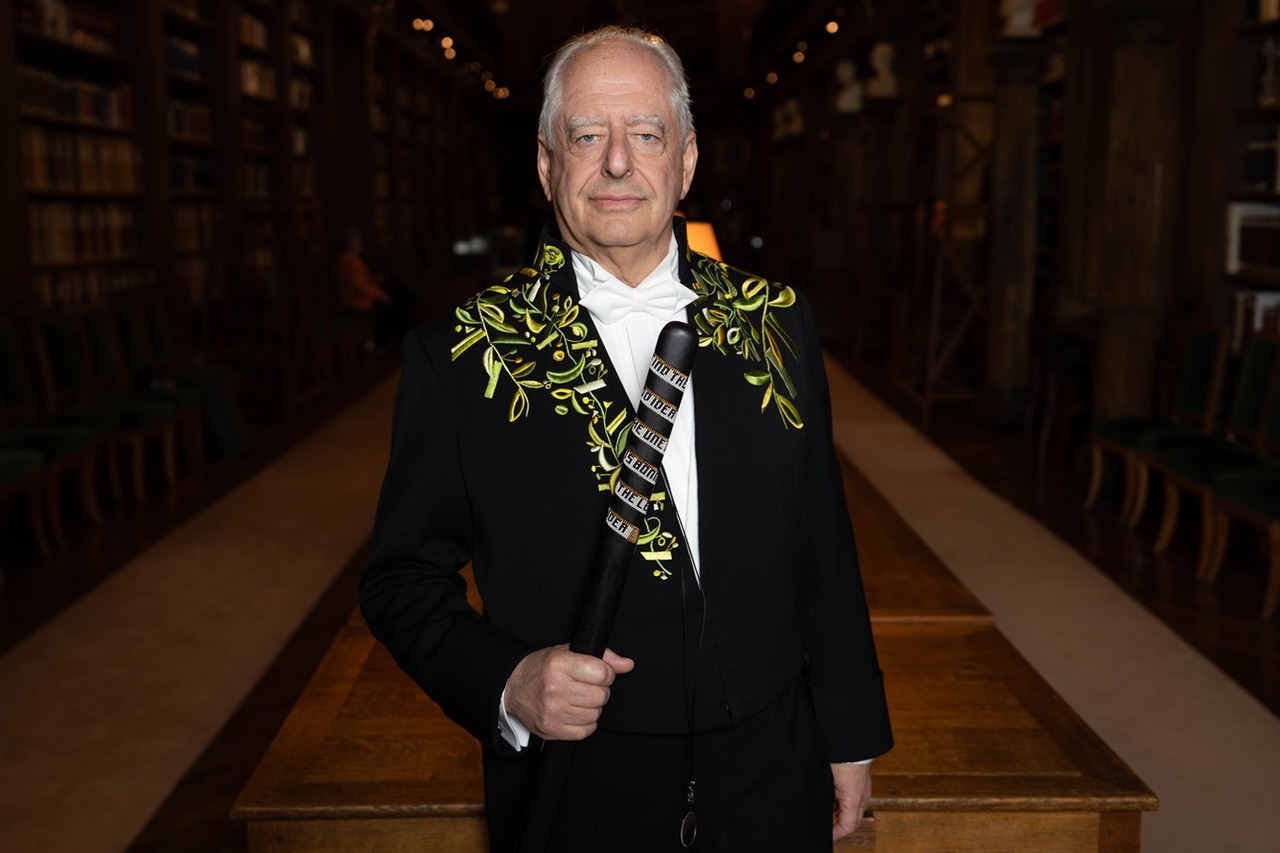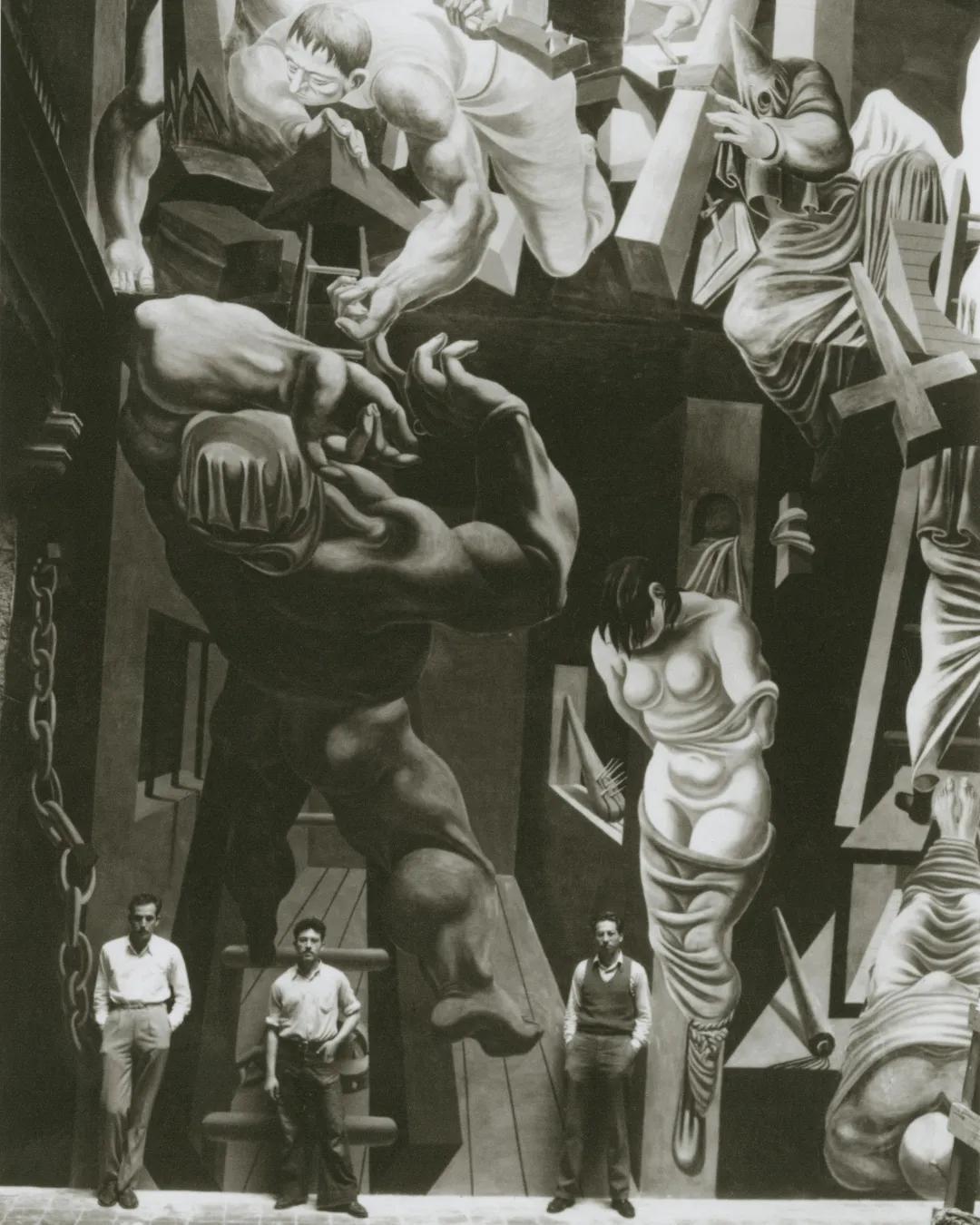Takesada Matsutani

Takesada Matsutani, ‘Germer’, 1990 © Takesada Matsutani. Courtesy the artist and Hauser & Wirth. Photo: Alex Delfanne.
Takesada Matsutani
The exhibition 'Gutai: Splendid Playground,' which took place at the Guggenheim Museum in New York, from February to May this year, provided an insight into one of the most significant movements of the post-war era. The group, founded by the painter Jiro Yoshihara in Osaka in 1954, played a pivotal role in shaping Japan’s artistic creativity and inspired artists for almost two decades before it was dissolved in 1972.
One of the Gutai (Gutai Bijutsu Kyokai) members who joined the group in 1962, and who was also featured in the magnificent Guggenheim exhibition, is Takesada Matsutani (b. 1937), who has lived in Paris since 1966. In order to become part of Gutai, he developed a unique technique based on vinyl glue that he later perfected using graphite pencil. As Gutai is ultimately getting more attention, it is also a good excuse to revisit Takesada Matsutani’s trajectory: a dynamic that so far has remained unmatched in Japan.
ASIAN ART NEWSPAPER: It seems that the Gutai exhibition at the Guggenheim Museum was almost overdue since Gutai previously had not the platform it actually deserved - a blockbuster exhibition in a major venue.
TAKESADA MATSUTANI: People have finally recognised the group per se and recognise its importance. Back in the 1950s, there was a lot of abstract avant-garde work in Asia and I think that today people now understand our activity. Personally, I participated slightly later than the initial members who started Gutai in 1954. I joined the group in the very early 1960s and we were part of a different generation. By joining the group almost 10 years after it was started, I was convinced that artistically I had to go beyond Gutai, beyond what the group had already accomplished. This was not an easy task. As for the Guggenheim exhibition, I was surprised and very happy that two of my pieces were selected for the show. It was a curious experience to see these works, which are almost 50 years old, on show at the Guggenheim! Back in the 1960s, my priority was not major exhibitions, as we were working in a specific area and were all very young - in our early twenties. We simply wanted to challenge existing works. As of today, most of the first-generation members have passed away and there are only a few Gutai artists still alive. I was the only Gutai member to live abroad whereas most of the others stayed in the Osaka area. At the time, Gutai was a strange group, but it was very active and very avant-garde.
AAN: People finally seem curious to find out what happened in Asia after the war and are more open-minded about historically important art groups like Gutai.
TM: I must explain and provide some elements about our history. Japanese civilisation, and our history, originally came from India and China through Korea to Japan. Later on, almost 300 years ago, Japan opened to the West and we absorbed a lot of European influences, not only in terms of art and literature, but also technology. We Japanese can be very clever: we copy, but once we digested everything, we make it our own. In addition, it is important to emphasise the fact that we were not colonised and, although we are geographically isolated in Japan, we are very interested in other movements. Consequently, we have an oriental and Buddhist civilisation, but in parallel, there also exists a Western civilisation. We have always had this parallel, which sometimes people find hard to understand. For example, you can be in traditional Japanese house with tatami learning about European style. In Japan, there are very few original Japanese houses left now, so our civilisation, so architecturally it is a mix of Oriental and Occidental. Unfortunately, during the Second World War we did something stupid, and materially we lost everything. However, we were not destroyed mentally. We wanted a new life, and industrially and artistically we were determined to explore other options. At that time, our Gutai leader, Yoshihara, said we should never copy, but do something new. I understood this concept, but it was not easy: how do you do that visually? that is why, in my case, I started to use a lot of different materials, and I began using vinyl glue. Most artists in the Gutai group understood what art was, but they were against Japanese formality. I realise we have a fine tradition in Japan, but sometimes tradition can become too formal. Our leader wanted to create something different. Of course, at that time we were aware of the latest developments in art movements in America and in Europe, however, we never saw the original works. It was a curious, but also very challenging, time. in hindsight, we were strongly influenced by our tradition, but as strong as it was, we also anted to do some new. After the war, there was a big freedom movement going on around the world - it appeared in Japan too. Although we were never colonised, we were free an had the desire to explore without logic: action was our motto. Many artists followed that motto very closely, working with ephemeral things. What they did in the 1950s was well executed, although they used very cheap materials. During this period, however, the majority of artists in the country were still mainly involved with traditional Japanese painting or figurative painting. As I was so young, every month there were always new developments, and slowly I moved towards Gutai. At the end of the 1950s, I asked Montonaga, one of the Gutai members, if I could participate in Gutai. that was the beginning.

Takesada Matsutani, ‘Work 63’, 1963 © Takesada Matsutani. Courtesy the artist and Hauser & Wirth. Photo: Alex Delfanne.
AAN: You tried to be part of Gutai upon several occasions. Do you still own the first piece you showed Jiro Yoshihara? TM: Yes, I still have it in Japan. Back then I like Jackson Pollock. My generation is 12 years younger than the first-generation Gutai members, and for me, Jackson Pollock was very fresh. At that time, I also discovered liquid vinyl glue. I did the same thing as Pollock and dropped it, but Yoshihara was categorical in his response: he said, ‘No, you are just dropping some liquid! it may be different, but the result is the same!’ He said my work was no good. He was very severe and we all showed him a lot of respect. He did not explain why the work was no good, he merely said ‘yes’, or ‘no’ without any further explanation. Once he had said ‘no’, it was simply ‘no’. At the time, it was a great challenge to join Gutai, which then was basically the only art group in Japan. Many artists, once they were over twenty-years-old, wanted to work with Yoshihara. Yoshihara’s mind and character were very much respected. Of course, there were some artists who did not want to go along with Yoshihara’s views and they subsequently left, but most of them stayed and respected him. He was a very special leader. AAN: What made Jiro Yoshihara such a special leader? TM: His ideas were very sharp and defined. For every show Gutai had, Yoshihara produced a small leaflet featuring essays not only in Japanese, but also in English and sent them all over the world to museums, galleries, collectors, and artists. He was avant-garde in that respect: they found one of our gut issues in Jackson Pollock’s studio. He felt it was important to inform people about what we were doing. Jiro Yoshihara also wanted to show in New York together with some fellow Gutai members, so they organised a show at the Martha Jackson Gallery and Yoshihara helped pay for the exhibition’s expenses. In fact, he had two jobs: one as an artist and the leader of Gutai, the other as a businessman (he was the director of an edible-oil company founded by his merchant family). His father let him paint under the condition that he also ran the company. As Fujita returned from Paris to Japan, he asked Yoshihara to come to Paris, as it was as interesting time to be there. Originally, he was determined to go, but his parents said no, as they expected him to run the family business. As he was financially independent, he could help the group a great deal. After the war, his company office, as well as the storage facilities, were happily not destroyed by the conflict and remained intact. These premises became the Gutai Pinacotheka. So, Yoshihara helped the Gutai Group not only visually and artistically, but also materially. At that time, there were no contemporary galleries in Japan except for one or two in Tokyo, but none in Osaka. Yoshihara was unquestionably a visionary, a pioneer, and was respected as such. In addition, a number of artists in our group were not well off financially and Yoshihara’s financial position also created a certain distance between him and the other members of the group. He was gentleman with a very keen idea and most artists followed him. At that time, being slightly younger than the first generation Gutai members, I had the opportunity to look very closely at these artists as they settled in a relatively small area between Osaka and Kobe, which is no more than 70 kilometres. Consequently, I was already very familiar with their work.
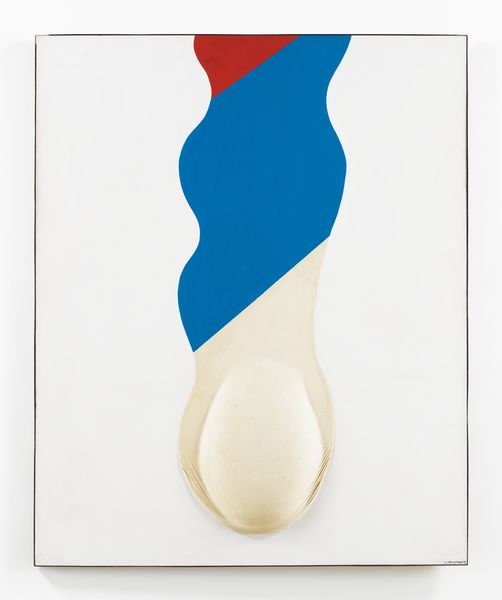
Takesada Matsutani, ‘La Propagation’, 1968 © Takesada Matsutani. Courtesy the artist and Hauser & Wirth. Photo: Alex Delfanne.
AAN: Would you say that there was a big difference between the first Gutai generation artists and the second generation, the one to which you belonged?
TM: Yes, they were very different. The first generation already knew about painting and they were determined to break new ground and follow new ideas. they initiated a lot of performances. I had seen all the work and actions done by the initial Gutai members who were very much in sinque with each other’s ideas. They were very clever and logical, while being driven by their sponteneity and a certain freedom. I remember I was seven or eight years old during the war which was a terrible time. After the war, there was a great sense of freedom, not only in Japan, but also all over the world. We had our own aesthetic culture (religious paintings, tea ceremony, calligraphy, amongst others), but we also knew about Western art and at Gutai we navigated between both cultures. Yoshihara created new ideas and at the same time was also very well informed about what was taking place elsewhere. In his studio, he had numerous catalogues from abroad that he would share with us. Yoshihara’s story is also a personal story: he did not go to art school, but went to university instead. He was very much aware and influenced by European art movements formed by Miro and Picasso. As Fujita came back to Tokyo by ship and came to Kobe, Yoshihara showed him paintings, and Fujita said ‘these look like Matisse’. Of course, initially everybody was influenced by their predecessors, but he was also striving for originality and wanted to implement new ideas. Some artists remained under the influence of other artists throughout their career, but others went beyond these influences: that is how you recognise true talent. Yoshihara had that kind of talent and wanted to be the leader of the group. Gutai artists knew that he was important to the group - all the more so as financially their situation was difficult as there were no sales.
AAN: At the time, how was your work recieved in Japan?
TM: Originally, I painted a lot of traditional paintings: people understood figurative painting featuring flowers or a landscape, and found them attractive. The minute I changed the subject matter towards abstraction, people were wondering what it was - that is typical when you introduce any new ideas. Today, the Japanese are sometimes very strange: they live within their traditions (tea ceremony, calligraphy, etc.) which is supported by our education system. It is very old system, which encourages you to follow one road and one road only. Consequently, back then, there was no original creativity anymore. Industrially, it was quite easy to get to digital technology, but aesthetically, the system followed the traditional old ways. In my case, for about three years, I was strongly influenced by action painting, which led to my work being turned down. Nevertheless, I had a kind of ‘organic’ idea, influenced by my friend who worked in medicine at a university. I once looked through his microscope and what I saw was very intriguing, so I copied the image. One day, I wanted to create a biological shape, but in three dimensions. I could not use ice because that would melt and become liquid, so therefore I decided to replace it with vinyl glue. I thought that was an interesting material, and one day when the weather was pleasant, I was outside and experimented by pouring some glue onto the canvas. As you know, vinyl glue is very liquid, a little bit thicker than milk. With the outside temperature and the wind, the glue dried and the water evaporated. The material beneath started to become like skin, like pores, but inside it was wet. I nevertheless still left it and kept it. By chance, I had discovered an unusual material. I thought I could recreate the same type of work, but inside, in a room calculating all the parameters. I pulled vinyl glue, which became like a cake, and in order to dry it, I opened it and cut it in the middle, which made it look like a half opened flower. I thought the material - very sexual, very organic - was fascinating. I made several of them, and I showed them to another, older, Gutai member. He thought the shapes were quite interesting, and he encouraged me to show them to Yoshihara. I had shown him many works over the years, and every tie he had said no. I showed these new works to him in 1962 and he said, ‘these are good, we can accept you as part of the group’. Today, I still use vinyl glue, but mainly black and white.
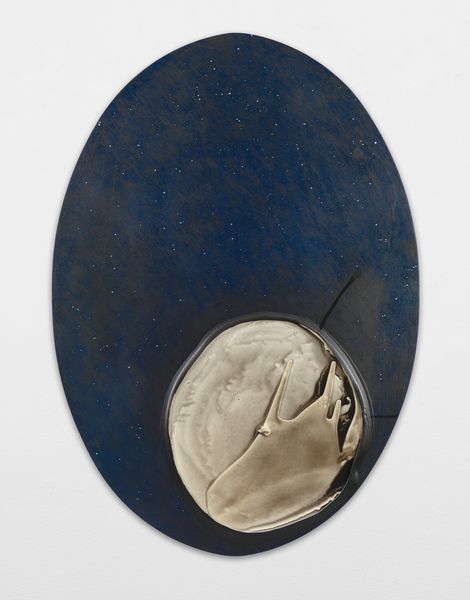
Takesada Matsutani, ‘Circle-Eruption’, 2005 © Takesada Matsutani. Courtesy the artist and Hauser & Wirth. Photo: Alex Delfanne.
I have been part of Gutai for almost 18 years. When I became a Gutai member in the early Sixties, there was almost a 10-year gap between the time Gutaistarted and when I joined. By the time I was in the group, they had already done everything from installations to performances. I thought that what they were doing was very exciting, but not having been part of it, I felt I did not belong to it. So in a way, I always had a complex relationhip towards the earlier Gutai members, I thought that maybe I was not as good as them and did not deserve to be part of the group.
However, I always wanted to go beyond Gutai. Then in 1966, Kyoto and Paris were twin cities, and a print exhibition was announced awarding a first prize a scholarship to Paris for six months. To my surprise, my print won the prize, and I was invited to France for six months, all expenses paid. After six months, I was expected to go back, but I wanted to stay there longer. We agreed that I would have to support myself, but that they would change my return ticket to the latest possible time - four years later.
Therefore, I stayed an extra four years. When I arrived in France, I did not speak any French, or English. In Paris, the first thing I wanted to do was to see the rest of Europe with my own eyes, and I even included Egypt in my itinerary. After reading about Europe in books, I finally got to see it all with my own eyes. Back in Paris in 1967, I was living in a small hotel in the Quartier Latin, and I had no space to work. I knew about William Hayter who had shown at the Tokyo Printing Biennale in 1959 or 1960 while I was at art school. I had seen his prints.
I thought about going to this Atelier 17, because I was interested in learning about engraving which represented a different approach to the three-dimensional work on which I had been focusing. In addition, I kept thinking that I needed to get back to drawing, which I had not done since I had departed from a figurative style. His atelier was independent with many artists living right next to it. I started at Atelier 17 in 1967 and I ended up becoming Hayter’s assistant, staying in Paris for good and never going back to Japan.
AAN: Staying at Atelier 17 represented quite a transition, from the three-dimensional to prints, which are by definition meticulously planned and flat.
TM: Indeed, Gutai was direct and spontaneous. Which I was in Paris, the Gutai group still existed, but it was very far away from my life then. In 1972, they asked me to come back to Japan to participate in an exhibition, but I declined and decided to stay in Paris. Gutai was still there with their actions, but I could not always continue doing this work. In France, I needed to tell a story. That is why I started with my idea, which was very organic, and kind of sensual. During this period European seemed to be very logical, planned, whereas Japanese artists were being very spontaneous. In Paris, I needed an idea, a story to tell, but I knew that Yoshihara was not fond of stories in art.
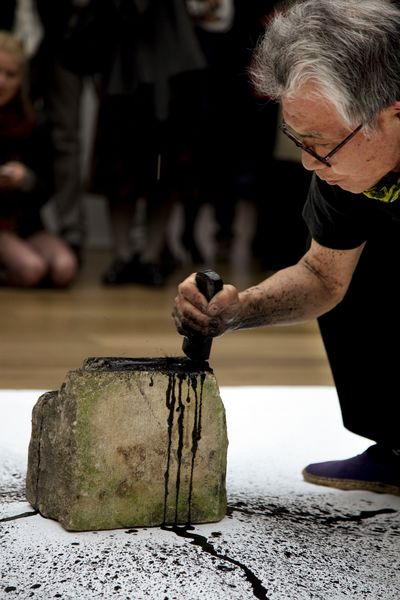
Performance of Stream Hauser & Wirth, London, 2013 © Takesada Matsutani. Courtesy the artist and Hauser & Wirth. Photo: Guilhelm Alandry.
AAN: Why did you abandon colour in your work around 1972?
TM: Because I was not satisfied with my work. I had a zen-like moment and, one day and, one day, I stopped everything. I asked myself, if I had one sheet of paper and one pencil, what would I do? I started to draw with my black pencil. In the Seventies, nobody knew my work and I had a lot of time on my hands. Everyday, I drew on my sheet of paper until it was completely black. I showed them to a friend who said I should do 10 more because they were very interesting. As I had time, I kept drawing meticulously by hand. I find using the human had very important, as we are not machines. One day, I saw Jun’ichiro Tanizaki’s famous book In Praise of Shadows, which made me wonder whether vinyl had a relief. To surprise, there was a shadow, which also created another type of black. I became aware of various nuances and, even today, I continue to challenge the media of vinyl glue and black pencil, which I have been working with for the past few decades. Sometimes, I also explore the idea of movement in my work by creating a piece through performance. I put a stone on the floor with a bag of water hanging from the ceiling with a hole in it. I start to scratch the stone with black Chinese ink while the water pours on it, leaving its mark on a sheet of paper placed underneath. I did such a performance upon the opening of my show in London ('Takesada Matsutani A Matrix', Hauser & Wirth, May-July 2013). The performance lasted for about 12 minutes, and it was surprising, even for me, how people were fascinated by the performance with nobody moving, but just concentrating on the work in progress.
Related News
1 / 5

